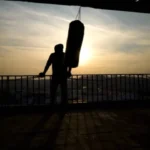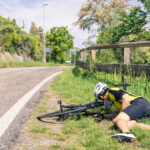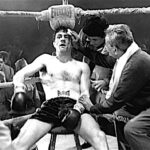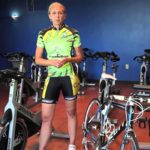
It normally starts like this –
A social situation which finds us surrounded by a few channeling insecurity and social reticence. It could be a smaller group, around a restaurant table, or a scrum in someone’s kitchen. As others talk and engage, we are sized-up. Normally in the form of furtive glances, hoping we don’t catch them. Once the conversation begins to lag it is followed by a few excruciating seconds of heavy silence.
Almost everyone these days seems petrified of silence, so much so many talk to figure out what they think.
And then we arrive at the inevitable moment when one of them turns to us and starts babbling. How they never get a chance to workout, or that their latest diet is proving ineffective. Others will join in to support the babbler, dismissing anything that sounds like an impediment to so-called happiness, while re-iterating they are more than ok…just the way they are. “After all, life is hard and we do the best we can.”
About this point, we do our best to blank our expression and think about socks, oatmeal – anything that won’t betray any form of judgement. And right about the time we are ready to escape to another mind-numbing encounter group, or even better the bathroom, we’re intercepted by that ever-so-light touch on the arm, gentle but enough to convey our presence has yet to be properly dismissed. Then, at long last comes the question, the same one asked in many forms over the years but basically boiling down to this: What would we recommend as the best way to get started with an exercise regimen?
And then we’re hosed, stuck, no chance for escape, with multiple sets of eyes sheepishly rotating between shoes and the bottom of our chin. All waiting to hear what we might possibly say, so they can quickly forget it and likely laugh about it later. We used to take this question more seriously, wanting to be liked and accepted by those we didn’t know. We’d ask a few serious questions, and honestly try to impart some advice they might find useful. It took us years to realize most doing the asking were either intimidated – and didn’t know any other way to make polite conversation – or were being passively aggressive little trolls, having a snicker-worthy go at the aging jock.
But to be honest, back then we were lost, insecure ourselves, and more than a bit touchy. Doesn’t mean our perception was off.
At some point we realized there was only one real answer for all such questions, one that holds for any journey that has value and takes you out of a comfort zone.
HOW BAD DO YOU WANT IT? Six little words that can save so much time and energy, if those asking are honest enough with themselves.
Want to write a book? Compete in a hundred mile race? Become a great cook and have more people’s respect? Be a better spouse, parent and friend?
Again – How bad do you want it? Simply saying it is only the beginning. What should follow is stringent contemplation, sweat, and determination. Over days, weeks or years. It’s a never ending process because we, as humans, should never view, or think of ourselves, as finished.
Once they’ve had a taste of how difficult this path can be. many will quit. Declaring themselves unable to commit the time or mental fortitude required. Not only to work on themselves, but by doing so advance and organically evolve into sometimes unseen corners we can’t control.
After years of regret and emotional sputtering, we have come to ask ourself the six word question more times than we can possibly recall. How willing are we to work on that book? Or that one, elusively lyrical sentence? We have at times found ourselves not been up to the self-imposed rigor. Found ourself feeling bogged down, or tired. But through the process we’ve also learned to try and forgive our soul-constricting moments, and try again. Either the next hour, day, or the next time, wherever and whenever that might be.
Ours is a society driven by the need to ‘be.” Within a group dynamic and willing to sacrifice individual thought and accomplishment. Most never consider taking up anything that Can’t be shared, moment by moment, on Instagram, Twitter/X, Facebook or any other of the digital platforms. It’s become far too easy to let ourselves off the hook, because what the hell…everyone else does.
We are followers, in every malignant sense the word implies.
And so when we’re at these awkward gatherings, and toss the six words out to a particular group or person, the response is usually an earnest attempt to make sense of the question. “Well, I really need to do it, so I must want to do it, right?” This is almost always followed by a request for assistance…to work out together, or take a ride together. But training is not only working out with partner. Too often it devolves into another shortsighted form of social endeavour, and will at some point devolve into an empty vessel, one that is much easier to sluff off and abandon. This is not to say a workout buddy is a waste of time. Any reason someone decides to get moving is a worthy one.
But for us, training will always be a solitary journey. No one has ever been able to push us as hard as we push ourselves. We train to live, and at least for those two hours six days a week. All the while pushing to answer our own question – how much do we want it?
And then we ask ourselves again, the next day.
Comment

I am lucky. Still walking and functioning reasonably well.
The truth is, it didn’t even feel that bad when I went down.
Mercifully there is no memory of the impact, only the moment before: A rising chunk of badly laid concrete; A sharp shudder; The frozen, petrified face of the other guy.
Up to that moment, it had been a typical Los Angeles day, and I was comfortably clipping along the bike path at 23 miles-per-hour.
Two specks appeared in the distance, closing in from the opposite direction. One was skirting the broken yellow line. As we approached one another, I drifted to my right, taking a usual precaution. Fortunately, you learn a few things when you race bikes, like vigilance and how to avoid trouble.
As we reached the point of passing, the one nearest had crept a few more feet over the middle line. I drifted further to my right, as I’d done a thousand times, knowing speed and a tightly controlled angle would get me past the potential problem.
Like all other city streets, bike paths suffer from potholes, pregnant bumps, and grime. This protrusion rose half a second before it was visible. Instinct pulled my bars left as I leaned with them, a hurried but safe correction which would have been relatively seamless any other day, time, or ride.
And then I was down.
Despite the fog clouding true coherence, I understood I was on my knees, parallel with my front wheel, which was bent and spinning drunkenly. Trying to move made me realize I was having trouble breathing. My upper torso was rigid and unyielding. Angry bleeding slashes dotted both arms and legs. My helmet was askew but felt intact. The impact had left the other victim dazed, sitting up on his elbows. Other than a mouse growing under his eye, he didn’t seem too damaged. He asked if I was ok and got a mumbled response as I slowly crawled to get off the path. His partner had veered the other way, and now rested against a cyclone fence. Their expressions gave away how I must have looked. I thought it was strange that my neck wouldn’t stop quivering.
Lacking the ability to rescue myself, I called my girlfriend before limping to the nearest intersection, dragging my battered bike. A few minutes later she pulled up, her worry obvious despite the smile she employed to calm me down. Once the bike was secured in the back seat, I slowly dropped into the passenger side, telling her what I figured was the truth – Probably a few days of soreness, like most other incidents I’d lived through, but nothing too bad. I didn’t tell her I was having trouble breathing. I kept reminding myself that when you train and race bikes, there will be times you crash, and I’d been down several times.
My body continued to lock-up during the short ride home. I gingerly made it up the steep stairs and into the bathroom. Pulling the helmet off revealed a mess on my forehead, tattooed crimson striations. Meaning my head had hit the ground with force and probably bounced a few times. Considering that, I pulled myself into the (thankfully,) stand-up shower, resting against the cool tiles as hot water blasted over my now-screaming back. Best to call out sick for the day.
My girlfriend watched helplessly as I tried to bear up from the couch. She thought I needed to get checked out. Given history, I thought she was being overly cautious.
My last incident had been a direct, 33 mile-per-hour t-boning, perpetrated by a young women who illegally came across five lanes to enter a parking lot. She’d never raised her eyes from her phone while smacking me right out of a bike lane, up and over her hood and into her windshield. In that moment, she’d finally looked up – hitting the brakes in panic and sending me sprawling over the side of her Hyundai. Face first into the street.
After an ambulance ride came four hours in an Emergency Room. 30-thousand-dollars of tests revealed I had somehow suffered NO broken bones or major internal damage. There was my lacerated face, which took 200 stitches, half of them inside my mouth. (To this day I have no feeling in my chin, where several nerves were severed. I also have no visible facial scars, owing to a superb plastic surgeon who that morning just happened to be doing his one day a month rotation in the ER.)
Which is the long way of admitting several narrow escapes had left me stubborn. And something of a jackass.
This time, almost two days after my latest crash, the pain became so severe I relented and went to my doctor, who took a few X-Rays and hustled me off to another E.R, where several hours later I learned the grim truth: Three broken ribs in my back; A punctured lung and a broken right thumb.
The doc laid it all out with the customarily distant and clinical chill. There was nothing to be done for the ribs, beyond pain killers. I’d have to return in a few days for more X-rays to determine if the lung was healing well enough or if a breathing tube would be required. My right thumb was decimated at its base, something known as a Bennett break, apparently one of the more severe and requiring immediate surgery from a hand specialist. I asked a few stunned questions before the expert hustled himself out.
Thanks Doc – good talk.
This was uncharted territory, so I lacked reference as to what was ahead. Still, I was no stranger to physical trauma. In the summer between High School and College I’d destroyed my ankle, killing any hopes to continue playing baseball. Then some 20 years ago, I’d blown out tendons in both knees, followed by surgery and 2 months of slow-tick downtime. My system rejects pain killers, so I’d been forced both times to muddle through without a crutch.
When I cautiously walked out of the ER this time, it had been just under 48 hours since the spill. There was extensive pain, radiating and sharp in equal measures, but I’d already convinced myself that because of my high-tolerance threshold (marveled at all those years ago by my knee surgeon,) I could tough this out as well.
What I didn’t know about was the “two-day adrenaline cushion.” The Phantom Doc had forgotten, or more likely neglected, to mention it.
Two hours later, I could barely move.
Any attempt at laying down – basically any form of movement – sent a fresh round of shock-heat through my upper body. Relief wasn’t an option. All I could manage was to sit straight up, a position the injuries wouldn’t allow me to maintain for any length of time. Any squirm or shift brought nasty retaliation from the broken ribs. Attempts to breathe deeply might as well have been a stake through the bottom of my lungs. A simple sneeze released electric shudders lasting several seconds. They were so brutal the thought of future ones became terrifying. I slept sitting up in a chair, waking every 20 minutes to a fresh jolt of misery. The acute level of pain never wavered, forcing me to find an ability to better tolerate it.
These issues were augmented by a surgically repaired thumb and the resulting swelling. I’d stayed awake during that procedure, too freaked out to let them put me under. A low dose of Fentanyl slightly calmed me down, but I still felt everything: The tugging, resetting and drilling as pins were secured into bones of my hand. The anesthesia ushered a massive headache. The cast went almost to my elbow. Of course, my right was my dominant hand, so showering and using the bathroom became adventures. Keeping my arm elevated didn’t stop it from yelling at me over the long days.
I kept thinking about books and articles I’d read, stories of others who’d fought through broken bones, especially ribs. Many of those had recorded a somewhat different experience, having survived it with a constant litany of serious opioids. I was finding it damn near unbearable without something to dull the edge.
Routine became a daily war with functionality. The day after surgery, I pushed myself back to work. Clearly, I was in lousy shape, but the moderate distractions kept me from going insane. I drove with my left hand, cursing every Los Angeles pothole and crack. My appetite wouldn’t have satisfied a sparrow. After a full day, or when it became too much, I’d head home, eat a piece of toast, and mentally prepare for another restless night of sitting up, nodding off and minutes later waking to severe spasms.
This phase lasted three weeks, as did the level of pain and sharpness of the attacks, striking without warning.
At some point, around post-crash day 20, I forced myself to try and lay down on our guest bed, which was lower and easier to maneuver. Jagged heat raced up my back as I delicately lowered myself onto my right side. (The bad ribs were closer to the lower left side of my hip.) A minute later, the dull aching subsided enough to lay my head down. Over the next several nights, I gratefully grabbed a few hours in this position, though muscle settling or shifting would bring a fresh batch of misery. Thankfully, the aftermath was faster to dissipate.
By week 5, I was finding four-hour clusters of moderate sleep, though harsh dreams and self-doubt were creeping into those overnight hours, waking me drenched and emotionally spent.
A broken body is a cruel reminder that fitness isn’t a shield against bad luck and fate. Reflection in this state can punish the soul. For me, the condition became a mental and physical prison, a cauldron of anger, futility and depression. Nothing seemed normal. Peace became elusive.
For 50 years, beginning with kindergarten recess on the blacktop, I’d pushed myself with singular purpose, challenging stamina, later for hours on end. Fighting the good fight. This time, my strength returned slowly, and did so with new limitations. No one wants to cope with the bitter realities of age, so I am certainly in no way unique, though I do have a athlete’s understanding, maybe better now than ever.
Almost a year later, the bones have “technically” healed, though the ribs in my lower back don’t need an excuse to ache most mornings. My hand has returned 60 percent of its functionality, and throbs for no reason. My cardio engine isn’t where it was less than a year ago. Before the accident my BPM could top out around 195. Now I’m straining when it lands in low 170’s.
A few months back finally brought the all-clear to resume heavy bag and boxing workouts, along with normal resistance training and isometrics. I invested in a smart trainer, set up on my patio, that allows me to ride my bike with various forms of climbing and pitch on virtual courses. I’ve had to give up “real” riding on streets and up mountains. My days of 100-mile races are over.
Problem is, I never learned how to quit. Thankfully the discipline remains: The necessity to keep moving, making sense of what you can while accepting hard truths.
The Good Fight will always be a worthy, but frequently heartbreaking cause. At best, it offers purpose larger than self, and if we’re lucky, a path to better days, even when it takes our scarred bodies longer to get there.
Comment

Working out is not training.
You probably hate us already for saying so.
Good. Let’s go with that.
Like so many other parts of life, when it comes to fitness, it has become too easy to tell ourselves that we are doing enough, or even worse, doing the best we can. It’s a cop out, offering permission not to ask for more of ourselves. This delusional form of self-medication (yes, that is what we are talking about,) inevitably leads down roads to the more dangerous forms of checking out: Booze; Drugs, Over-eating, and all other forms of self-destruction.
Oprah and her army of true-believers have created a huge, thriving industrial force, telling each other, and themselves, how great they are, how to take it easy, how to be satisfied with mediocrity, and most insidious, how to follow without sight or critical thinking. She’s convinced so many – women and men – that sitting around, bucking one another up, and crying at the drop of a hat is what makes us real, or at the very least, worthwhile and vital.
We could spend all day dissecting the good and bad of the Oprah effect on this nation and others.
But this is about training, not encounter groups, book clubs, or so-called healthy cooking seminars.
By our definition, the concept of fitness is radically different than what most of your under-skilled trainers will try and coax out of clients.
That hour you just did in the gym, half of which was spent looking at your phone? That isn’t Fitness. That 48 minutes of Spin, or Zumba? Great start. Now instead of yakking with classmates for the next half hour, or heading out for a couple of caloric lattes, try adding another 35-45 minutes of intense (not to be confused with heavy) resistance. With no more than 35 seconds of rest between sets.
This is the genesis of training, always pushing. If you mentally stop the free flow of endorphins to tell yourself you’re doing enough, you probably aren’t.
If this sounds like fitness fascism, then you aren’t ready.
It is a different form of reality, one that pushes through the doubt and insecurity, while learning to not only expect the pain, but embrace it.
These are only a few initial thoughts, a rough sketch. There will be much more in the coming days and months.
This site is devoted to higher forms of Training, and how it can enhance and operate in tandem with the better parts of our nature and existence. As our home page says – “Where Mindfulness And Physicality Co-exist.”
It is also devoted to discussing and possibly making some sense out of an increasingly mean and fragmented world.
For us, that all begins and ends with Mind and Body. Everything else is just an excuse, or a stall.
Comment

It was too many years ago that “Caddyshack” landed and become an instant classic, at least for a certain segment of young men. Though a brilliant comedy, there is a line that resonates with us to this day, for far different reasons than mere laugh potential.
Ted Knight, the perfectly cast Country Club President, waspy asshole and all-around douchefly, encounters Chevy Chase in the locker room. Chase’s Ty Webb is the most talented, albeit lazy golfer, on the Club’s roster.
Knight – “What’d you shoot today?”
Chase – “I don’t keep score.”
Knight – “How do you measure yourself against other golfers?”
Chase – “By height.”
Of course, like the rest of the movie, it’s funny – Chase was after all, four inches taller than Knight. Though almost 40 years later, the lesson now isn’t in the character’s flawless delivery. Instead it’s his motivation that the most enlightened of competition can and should be waged with himself, and if there is striving to be done, it has to come from within.
The web, especially social media, have destroyed our need for reflection and critical thought, and fostered the reckless belief that any question can be answered with a few key strokes. So why bother to figure anything out for ourselves?
For those who suffer from trust issues, and believe little of what is seen or heard, this is a debilitating coup that reinforces lazy mentalities and bad habits. Google and twitter have made short attention spans an asset, and that is killing us, spiritually and physically.
These days, when some finally tumble to the fact that they need to take better care of themselves, the first stop is Facebook, to find a trainer, or a community forum where like-minded enablers will lament right along with you. They won’t end up doing anything, but that’s OK, because at least you’ve given it some thought, or whatever passes for thought.
Those who fall into this trap aren’t really expecting to get into serious shape, just checking off the boxes. Petrified of hard work and self-regulation, they find comfort in talking over doing.
The majority of today’s trainers serve as emotional surrogates, at the expense of strict and regimented teaching. Most of the hour (standard is 55 minutes, which isn’t always enough,) is spent story-telling. Whenever someone has approached us during training to engage in chatter, we politely inform them that we would be more than happy to have a cup of coffee and socialize – after our session. Ask yourself what you are there for? And then get on with it, minus distractions.
No one can be rigorous 24/7, and that is by no means what we are suggesting. Everyone needs downtime, no matter how that manifests. Even revered stoics build in time to reflect and simply be.
But frequently letting oneself off the hook leads to bad habits. Excessive time spent over your phone; Eating and drinking too much because of mental boredom and failure of curiosity and imagination, all destroys the best parts of our soul. Or worse, opens the door to drugs and other forms of self-destruction.
Google, diet remedies, personal trainers? None are the self-proclaimed, all-encompassing panaceas ensuring a smooth path beyond self-doubt or depression. Not even the malaise that takes form when one blindly goes through the motions and then wonders, far too infrequently, where it’s all gone and what the hell has happened.
Trust practical experience. Find an exercise or discipline that you can work with, one that helps strengthen the physical bond with the mindful self. Google, or a trainer, can’t really tell you, beyond hyperbole, if you are pushing yourself hard enough, or if what you are eating will make you feel like sludge. Stop trying to sell the necessity of your needs and desires to others, just so you can feel a tenuous sense of inclusion.
Understand, accept and release what you can of the bruising insecurity that dwells in all of us. And then get on with it.
Believe in something larger and more important than yourself. Justify your life, and the way you live it, to yourself. Then strive to make it that much more.
Or we could be totally off the mark. Wouldn’t be the first time.
Comment

We want to assure anyone who loves spinning that we are behind you. It is an excellent way to spend 50 minutes in the gym, and many who do it are amazingly lean with boosted VO2.
But we felt that we needed to clear up a few misconceptions. Despite the obvious similarities, Road Cycling is a vastly different animal. As opposed to air-conditioned Spinning rooms, the discipline of cycling is an outdoor pursuit. A cyclist takes street and road vibration into their joints, maneuvering and pushing up grades and hills, or speeding through flatter courses. The spinner offers a smooth resistant stroke to its riders, while cycling demands the development of cycling tactics, over extended time and miles.
The most crucial difference lies in the 50-pound flywheel that spinners use to keep the rider pedaling. It retards the body’s natural desire to slow down when fatigue sets in. It also makes coasting impossible. For cyclists, these are natural physical reactions to climate and terrain. Anyone who’s ever tried to quickly slow down or stop pedaling on a spinner realizes that with the exception of the overall halt gauge, it is virtually impossible, especially for those weaned on the longer, time consuming rides a road bike offers. Heart rates bounce much more frequently on a bike as opposed to a spinner, which is ideal for cardio. The constant peddling on a stationary machine, even with added sprints and simulated hills, will normally engage the heart to lock on a more consistent rate, holding it steady to generally within ten beats per minute either way. (However it can and will spike on those sprints and simulated hills, just not as much or for as long as for someone on a road bike climbing a mountain, or suffering through a time-trial like ride.)
There are also more than enough good reasons not to road cycle, especially on congested streets. Safety is always at issue, and drivers are getting worse all the time, heads down on their phones and paying little to no attention. Though once bitten, cycling will usually prove a hard mistress to discard. It gives a great deal back on every level.
And if you’re like us, you simply hate to pedal while never moving. Again, just our preference.
Getting up and moving is life-affirming, be it spinning or cycling. As with anything important, make informed decisions and choose wisely when it comes to training. Experiment with various disciplines, to see which offers the better use of available time.
Comment
